Fulfilling our mission to protect and restore the Morro Bay estuary for people and animals requires a lot of hard work in the field. At the Estuary Program, that often means spending time doing research, restoration, and monitoring work out on the water. Read on to see what we’ve been up to during the past month.
This past spring, we were busy planting eelgrass. We planted just over 3,000 eelgrass shoots throughout the estuary. We chose transplant sites where naturally occurring eelgrass was found nearby. The five transplant locations in 2018 represented a range of conditions throughout the extent of the estuary including sites in the forebay, midbay, and backbay. You can see photos and read about the specifics of those planting efforts from our previous blogs: February 2018, April 2018.
Monitoring Eelgrass Restoration Plots
The highlight of our fieldwork in August was monitoring these restoration plots.
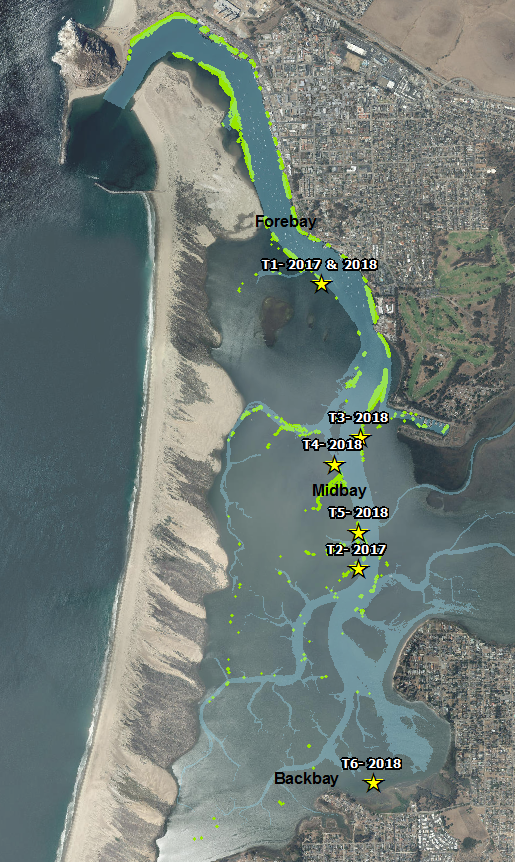
So, how are the transplants doing? We have been keeping a close eye on them and thought you would be interested to see their growth about 6 months after planting.
Forebay and midbay restoration plots
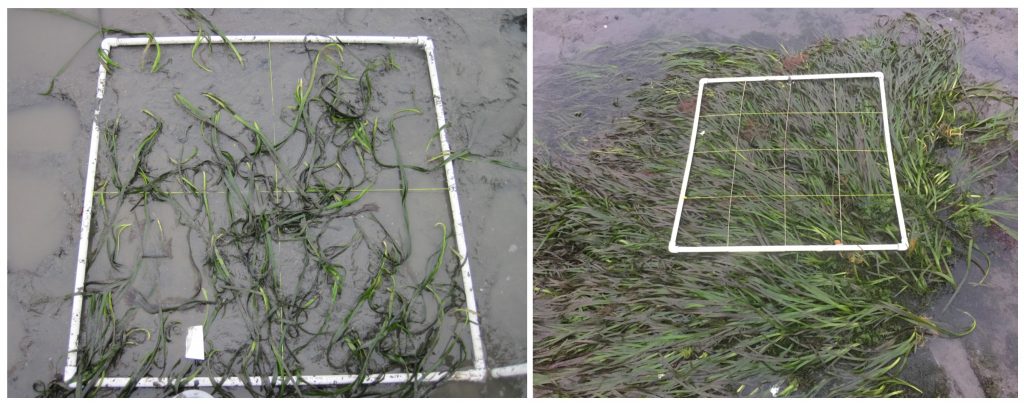
To track growth, we count the total number of shoots pre- and post-planting for an overall survival rate. After 6 months, we have seen encouraging growth at four of the five sites. Some of the plots already have densities similar to the eelgrass donor beds (the eelgrass beds we harvested from).
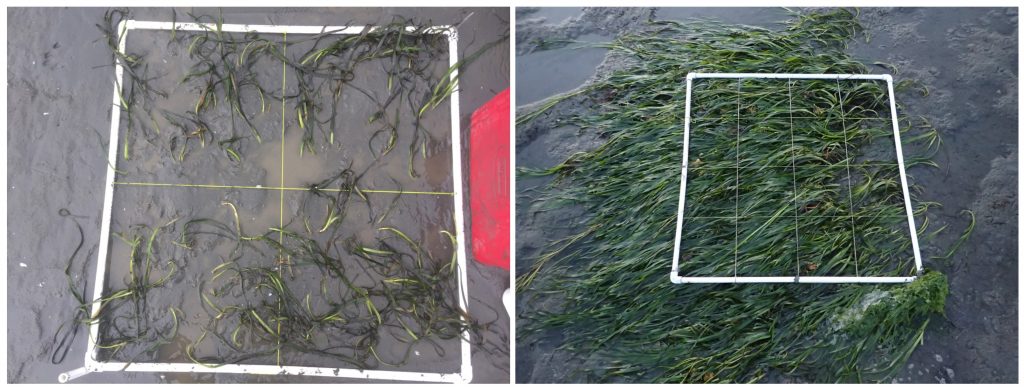
At the forebay site, we planted eelgrass at three different depths (approximately -0.1 ft, -0.5 ft, -0.7 ft). All three depths have been doing very well so far with an average of 412% increase in growth after four months for the nine total plots at this site. The three midbay sites have also seen growth outside of the plots, as shown in the photos below.
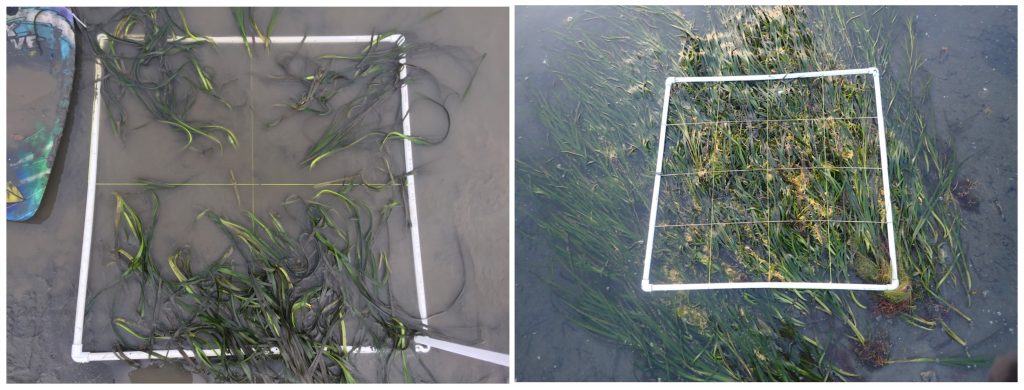
Backbay restoration plots
The backbay plots are not doing as well as the other sites but are still growing. Compared to other transplant sites, this site has a high elevation (approximately 1.4 ft.), but naturally occurring eelgrass still grows nearby. It appears that the naturally occurring eelgrass close to these plots is persisting in shallow pools. This small amount of water covering the blades may be what eelgrass needs to prevent it from drying out in the sun.
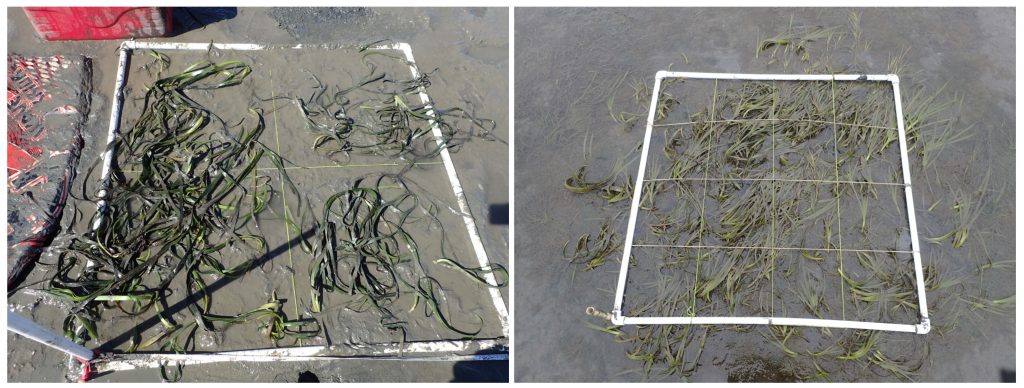
New rebar planting method
We also tried a new method of anchoring the eelgrass this past spring with a piece of rebar. The method worked well and eelgrass is expanding outward.
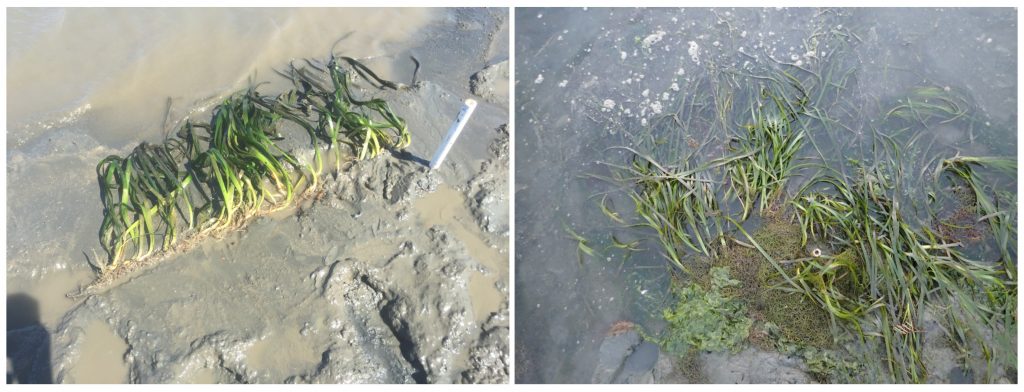
Restoration plots in the forebay from March 2017
We have also been tracking our plots that were planted last year in March 2017 in the forebay. The photo below shows one of these plots 16 months after planting with extensive growth outside of the original one meter by one meter plot size.
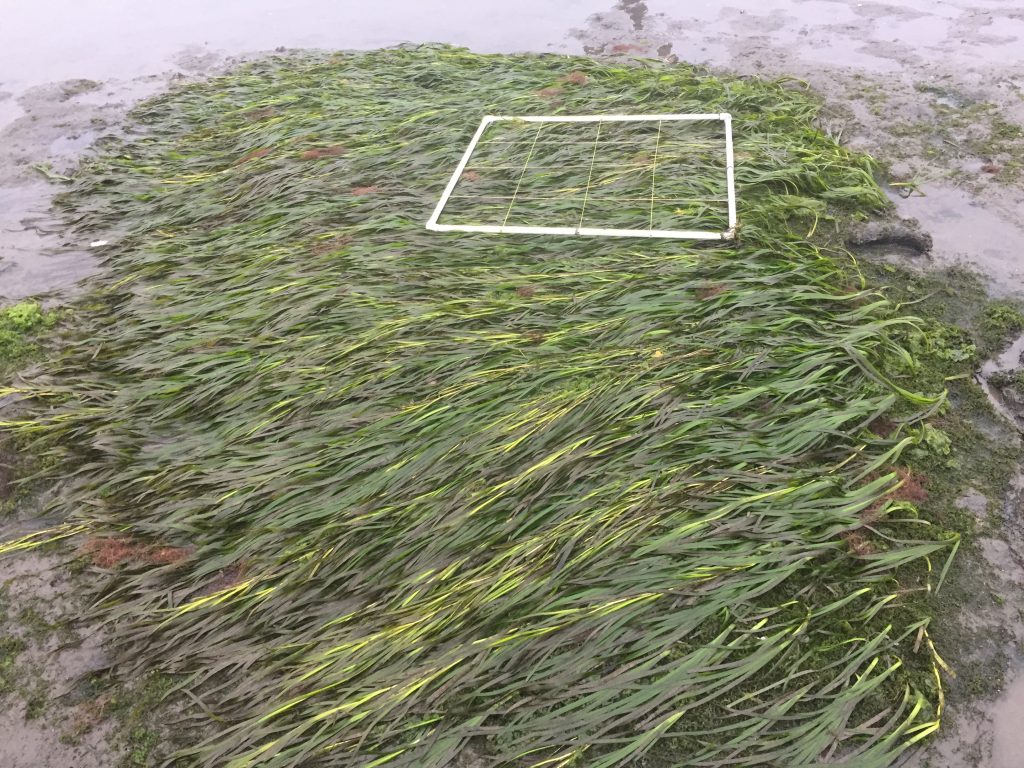
Thank you to our past, present, and future volunteers!
We can’t say it enough, a huge thank you to all of the volunteers helping with these efforts. We plan to complete additional eelgrass transplants during February and March of 2019. If you have any interest in helping with collecting eelgrass or accompanying one of our staff to help monitor the success of transplants, please fill out our volunteer form. This will allow us to reach to you when we are in need of additional hands. Thank you!
Subscribe to our weekly blog to have a an Estuary Program post delivered to your inbox every week.
Help protect and restore the Morro Bay estuary
- Donate to the Estuary Program today and support our work in the field, the lab, and beyond.
The Estuary Program is a 501(c)3 nonprofit. We depend on funding from grants and generous donors to continue our work. - Support us by purchasing estuary-themed gear from ESTERO. This locally owned and operated company donates 20% of proceeds from its Estuary clothing line and 100% of Estuary decal proceeds to the Estuary Program. Thank you, ESTERO!
- Purchase items from the the Estuary Program’s store on Zazzle. Zazzle prints and ships your items, and the Estuary Program receives 10% of the proceeds. Choose from mugs, hats, t-shirts, and even fanny packs (they’re back!) with our fun Estuary Octopus design, our classic Estuary Program logo, or our Mutts for the Bay logo.
Thank you for your support!